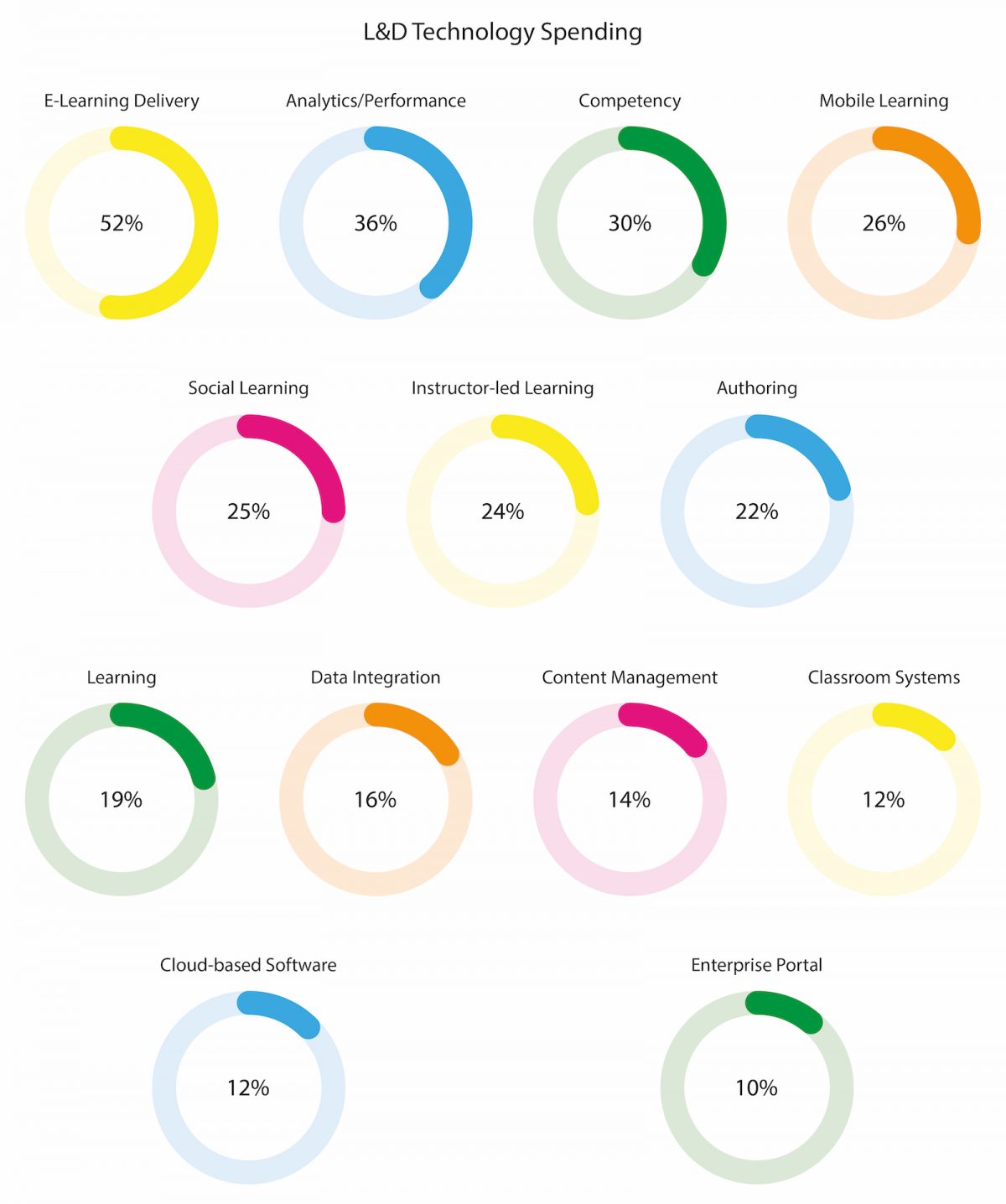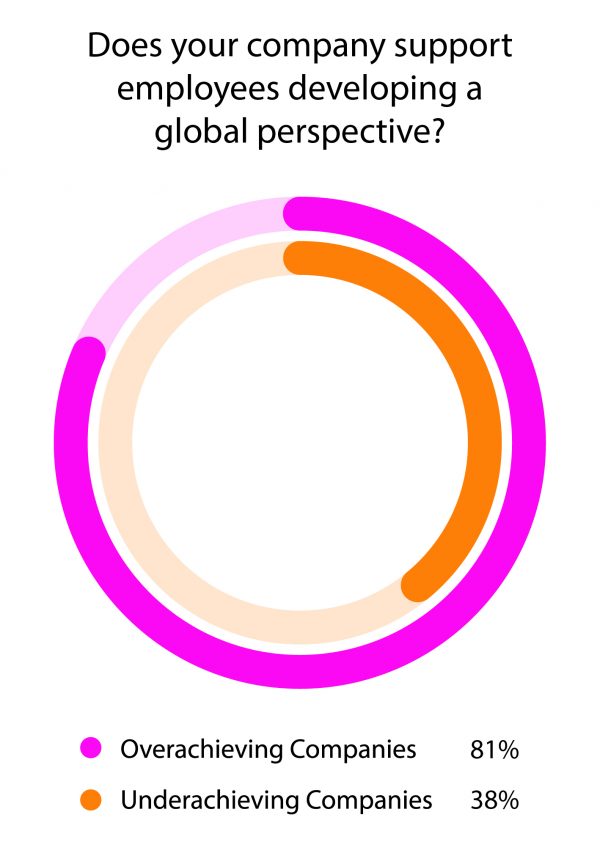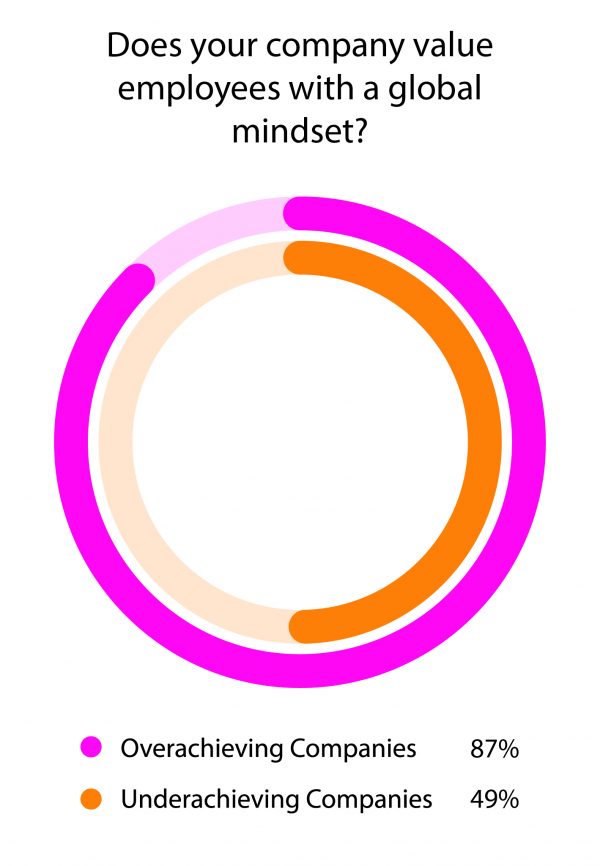The shift to global eLearning Programs
Corporate Learning. Upskilling. Reskilling. Workplace Learning — whichever label you wish to apply, eLearning is becoming increasingly popular among a significant number of industries worldwide.
Although investments in eLearning for internal training and professional development purposes have been on the rise in recent years, their adoption has certainly skyrocketed since the onset of the new coronavirus (COVID-19). In fact, according to the Fosway Group (a leading European human resource industry analyst), “97% of organisations are now using virtual classrooms to support learning and development, with over half (53%) reporting that they have proved to be their most successful learning platforms during the COVID-19 crisis.”1
97% of organisations are now using virtual classrooms to support learning and development, with over half (53%) reporting that they have proved to be their most successful learning platforms during the COVID-19 crisis.
According to Chief Learning Officer, a platform and community for C-suite and senior-level learning and development (L&D) professionals, although eLearning delivery “has been the No.1 anticipated area for L&D technology spending for the past few years, it jumped significantly from 2019 — when 41 percent of learning leaders identified it as an area of key spending —- to 2020, with 52 percent of respondents identifying it as such.”2

Data Source: Chief Learning Officer
And while this trend has a great many benefits to both employees and employers alike, online content in any form will have a grossly limited impact if it is not localised.
The increasing need for eLearning localisation
Investing in a growing global mindset
Today, a growing number of businesses, governments, and nonprofits alike are actively adopting a global mindset. Why? Because it is an effective way to remain relevant in today’s global economy. Even over a decade ago, the United States’ National Security Education Program (NSEP) warned that “[l]osing potential or actual business because of misunderstandings through language and culture can cost a company millions of dollars.”3 Simply put, companies with a global mindset achieve greater success at home and in international markets.
To put this into greater perspective, a recent study created by RW3 (a firm that provides culturally-based training solutions) and conducted in coordination with Seymour Insights (market research firm), surveyed 1,362 business professionals worldwide. The study found that “companies [demonstrating] a commitment to intercultural skills are far more likely to achieve their most important strategic and business priorities than companies that do not.”4 In fact, those that achieved or exceeded their business targets (“overachievers” in the study), were shown to overwhelmingly support and encourage a global mindset, as opposed to the study’s “underachievers” that do not.


Data Source: SHRM
Investing in eLearning localisation
A global mindset, however, requires investment in corporate training. Designing effective eLearning training programmes keep employees connected. They maintain engagement and productivity and work to build and strengthen employees’ overall skill set.
Before the pandemic hit, perhaps companies with a growing linguistically and culturally diverse workforce could get away with not localising their training programmes and materials, or at least minimising this investment. But all that has changed now that the vast majority of employees are increasingly isolated and working from home. The old training ways just won’t cut it anymore. It’s time for companies to invest in quality, remote training inclusive of a workforce’s linguistic and cultural heterogeneity.
By localising eLearning courses, companies demonstrate empathy and compassion at a time when it is most needed. Parents are now feverishly trying to juggle their work responsibilities while also caring for their children at home. And for many, this also includes homeschooling.
Employees now working from home are faced with multiple home distractions, scheduling conflicts, and technology glitches just to name a few. For employees with limited English proficiency, these frustrations are compounded if the eLearning material they are expected to independently master is not localised. Companies that support their employees, however, by investing in eLearning localisation will likely reap the benefits.
What exactly is eLearning localisation?
We’re certainly glad you asked. Let us start by explaining what it isn’t. eLearning localisation is not simply translating your eLearning material into different languages. A mistake often seen in the corporate world is sidestepping investment in the services of native-speaking localisation experts and instead, contracting with translators to do the work of a localisation specialist. Although different regions of the world speak the same language, they don’t necessarily express themselves in the same way.
A region’s culture, experiences, and history greatly dictate the look and feel of their language. In this vein, localisation goes well beyond translating the exact message “as is” by adapting your eLearning material for local cultures and languages. In fact, translation is just a mere fraction of the overall localisation process.
Localisation is the art and science of ensuring cultural references and linguistic nuances have been addressed in all training materials so that the final product feels as though it was written directly for that locale. This often includes the localisation of colors, imagery, visuals, photographs, currencies, measurement units, and symbols. Localisation specialists must also take text length into consideration.
The alphabets and fonts in some languages, for instance, take up a great deal more space than the original source’s alphabet and font. And let’s not forget about languages that read from left to right, right to left, and even vertically. This all needs to be taken into consideration for the layout of each eLearning module. To that end, it is wise to work with native local consultants with localisation expertise. This will ensure that your eLearning courses are appropriately localised according to each region’s respective laws, regulations, and cultural sensitivities.
What are the benefits of eLearning localisation?
When you invest in eLearning localisation, you gain the trust of your employees and strengthen their level of comfort working for you. Localising your eLearning programmes means that all employees — regardless of their language and/or geographic location — will be learning the same skill set and gaining the same knowledge. And when employees are presented with eLearning courses localised for their specific region, chances are they will better understand and retain the information.
We already know that engagement increases productivity. We also know that the more ‘valued’ employees feel, the more likely they are to remain in their current positions. And let’s not forget about corporate culture and reputation. By ensuring your eLearning material is professionally localised, you not only help your global employees to succeed but you further strengthen your workforce. When you show linguistic and cultural sensitivity by investing in eLearning localisation, you strengthen your reputation as an inclusive organisation that values diversity.
Localising your eLearning courses
Before you invest in eLearning localisation, it is important to plan ahead. Have a clear understanding of how many languages your course material should be available in and how many regions these languages are spoken. Search for native-speaking localisation specialists with whom you can consult to ensure proper attention is given to regionalisms, colloquialisms, and cultural nuances.
An integral part of the localisation process should also involve a thorough review of the look and feel of the overall eLearning course from a localisation point of view. If you are planning on implementing voiceover services, ensure that you hire voice actors native to each respective region. Depending on your time and budget, you might even consider testing your localised educational material with native-speaking learners in various regions. The bottom line is this — when it comes to localising your eLearning courses, consider the “high cost” of cutting corners. Turn instead, to experts in eLearning localisation and place quality first.
Global Lingo — Your trusted partner in eLearning localisation
Global Lingo never cuts corners. When you partner with Global Lingo for your eLearning localisation projects, you partner with the best. In fact, our specialised learning & development team consists of internal and external native-speaking localisation specialists who bring you years of experience as well as subject matter expertise in a wide range of industries. And with a core of over 150 languages — including every major world language — we have you covered.
The pandemic will continue to challenge us in countless ways and remote working will continue to be our collective reality, at least for the foreseeable future. With this in mind, it is more important now than ever before to support and value your employees. Partner with Global Lingo today, and together, let’s create engaging opportunities to meet the needs of your diverse workforce through eLearning localisation. Reach out today.
REFERENCES
1 “Fosway News.” Fosway Group, 6 Jan. 2021, www.fosway.com/about-us/fosway-news/.
2 John, Ashley St. “The Rise of e-Learning.” Chief Learning Officer – CLO Media, 17 July 2020, www.chieflearningofficer.com/2020/07/17/the-rise-of-e-learning/.
3 “What Business Wants: Language Needs In the 21st Century.” The Language Flagship, National Security Education Program (NSEP) at the U.S. Department of Defense, 2009, www.nsep.gov/sites/default/files/What%20Business%20Wants%20Report.pdf.
4 Kuehner-Hebert, Katie. “Multinational Employees With A ‘Global Mindset’ Perform Better.” SHRM, SHRM, 20 Dec. 2018, www.shrm.org/resourcesandtools/hr-topics/global-hr/pages/multinational-workers-need-global-mindset.aspx.